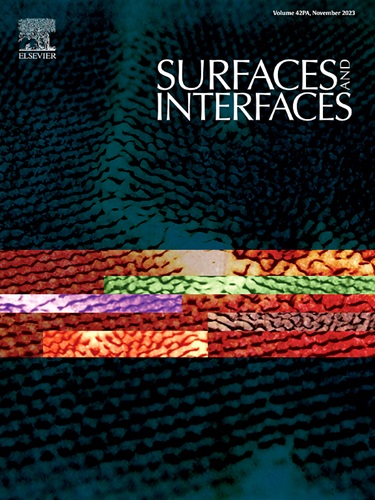Fabrication and morphological characterization of superhydrophobic PDMS replicated with laser-processed template
IF 5.7
2区 材料科学
Q2 CHEMISTRY, PHYSICAL
引用次数: 0
Abstract
A method for fabricating superhydrophobic PDMS replica surfaces using laser-processed templates is proposed in this research. The disordered micro-nano structures on PDMS surfaces can be replicated using templates irradiated with varying laser fluences, allowing the contact angles to be adjusted within the range of 110° to 160°. Fractal dimensions of both the template and replica surfaces were analysed using the box-counting method to characterize the relationship between disordered microstructures and the wettability of PDMS replica surfaces. The results indicated a strong correlation between the PDMS surface and the gas/solid area fractions within the contact region between the droplet and the surface. Furthermore, the PDMS surface attains a superhydrophobic state when the solid fraction reaches 0.27. Given the tensile and deformation behaviour of PDMS in practical applications, we further examined the stability of surface wettability in replicas under tensile strain. The results demonstrate that the superhydrophobic surface with hierarchical micro-nanostructures retains excellent performance even under a 40 % strain, owing to the stable solid fraction in the tensile state. This study presents a rapid and highly efficient method for preparing superhydrophobic PDMS. The PDMS composite produced using this method exhibits excellent self-cleaning properties and resistance to droplet interference, making it suitable for applications in medical and sensor technologies. Additionally, it provides an effective method for analyzing and tracing the relationship between surface microstructure and the wettability of elastic materials under tensile stress.

求助全文
约1分钟内获得全文
求助全文
来源期刊

Surfaces and Interfaces
Chemistry-General Chemistry
CiteScore
8.50
自引率
6.50%
发文量
753
审稿时长
35 days
期刊介绍:
The aim of the journal is to provide a respectful outlet for ''sound science'' papers in all research areas on surfaces and interfaces. We define sound science papers as papers that describe new and well-executed research, but that do not necessarily provide brand new insights or are merely a description of research results.
Surfaces and Interfaces publishes research papers in all fields of surface science which may not always find the right home on first submission to our Elsevier sister journals (Applied Surface, Surface and Coatings Technology, Thin Solid Films)
 求助内容:
求助内容: 应助结果提醒方式:
应助结果提醒方式:


